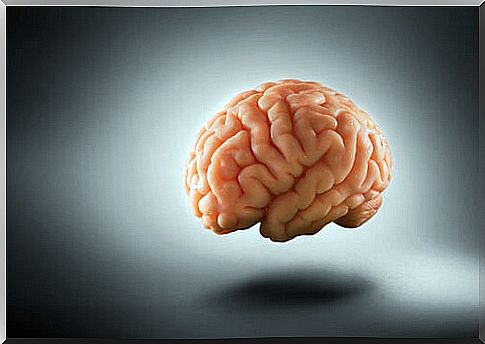What Is Psychosurgery?

The consequences of frontal lobe destruction have been very well documented by a disturbing, yet fascinating, practice in twentieth-century medical practice: psychosurgery. Thus, in this article, we will talk about surgery for behavioral disorders.
Psychosurgery is a subspecialty of neurosurgery that deals with the selection of patients, in addition to caring for the procedure and surgical target for the treatment of various psychiatric conditions. Its origins are somewhat distant and obscure, very different from what is carried out in the neuropsychiatric field.

Psychosurgery
Before the development of drugs to treat psychotic and affective disorders, few treatments were available. One that emerged in the 1930s was surgical.
Psychosurgery consists of the destruction of some brain area to alleviate serious and difficult-to-treat psychiatric disorders.
This type of surgery has been applied in the past for the treatment of different psychiatric disorders, including affective disorders, obsessive compulsive (OCD) and schizophrenia.
Between 1942 and 1954, more than 10,000 interventions were carried out in the United Kingdom and more than 18,000 in the United States.
Historical perspective
Enthusiasm for this approach to mental illness grew from the work of Egas Moniz in 1936. This Portuguese neurologist realized that the frontal lobes were important in the structure of personality and behavior.
In his research, he concluded that interfering with frontal lobe function could alter the course of mental illnesses, such as schizophrenia or other chronic psychiatric disorders.
Together with the neurosurgeon Almedia Lima, he designed a simple surgical procedure to indiscriminately destroy most of the connections between the frontal lobe and the rest of the brain.
One of the causes of the emergence and subsequent popularity of this type of technique was that at that time there were no pharmacological alternatives.
Psychiatric centers were overwhelmed and psychiatric illness became a major public health problem. In this way, psychosurgery began enthusiastically, since it allowed a quick solution, and at first, without direct consequences to the problem of mental disorders.
Another leading proponent of psychosurgery was the neuropsychiatrist Walter Freeman. Together with his colleague James Watts, he popularized this intervention in the United States. Both were the first to perform a prefrontal lobotomy, using a leukotome, in order to interrupt the connections in the white matter of the frontal lobes.
Freeman alone devised a new technique: the transorbital lobotomy. It consisted of the insertion of a sharp blade (in the style of an ice pick) under the eyelids and through the orbital roof, until it reached the lower surface of the frontal lobes. This practice allowed him to greatly expedite the surgery, so much so that he managed to perform it in the homes of his patients.
These initial surgical techniques were obviously rude, inaccurate, and associated with marked morbidity. Complications included severe intracranial hemorrhage, postsurgical epilepsy, or neurological focus depending on the severity of the surgical injury. Mortality was up to 10% of the cases; and notable personality changes were observed.
Change of perspective
The controversy of psychosurgery began in the early 1940s, due to its unscientific and sometimes indiscriminate application. Debates arose in the scientific community, and together with the frequency of secondary symptoms, they forced more rigorous tests to be carried out.
To this must be added the appearance of antipsychotic drugs in the 1950s, which demonstrated greater efficacy in the treatment of psychosis and were reversible in nature. Therefore, the surgical practice was losing weight as a habitual practice, to the point that in some countries it was declared an illegal practice.
The use of psychosurgery today
Since the 1960s, surgical techniques have evolved thanks to advances in neuroscience. Nowadays, a rigorous selection of patients, the precise techniques of stereotactic surgery, and a pre and postoperative evaluation have allowed psychosurgery to become an effective therapeutic alternative.
The selection of patients has marked a clear difference with the previous psychosurgery. It has gone from an indiscriminate application to one that is governed by a series of very defined criteria. On this it is based, at least in part, to present itself as the last therapeutic option.
Only those patients with a severe, disabling psychiatric illness and with a demonstrated resistance to all usual treatment are selected. The psychiatrist is the only professional who can recommend this procedure and must provide detailed documentation of current therapy and reasons for termination.
The family has to show interest in the surgery and be able to support the recovery process. The pathologies to which this procedure has been delimited are OCD and affective disorders, such as major depression or bipolar disorder.
Procedures currently being performed
Current surgical approaches have evolved greatly from the practices of Moniz and Freeman. The procedures carried out today are:
- Anterior Cingulotomy – Used primarily in OCD or depression.
- Undercaudate tractotomy : it is applied in the same disorders as the previous one, but even presenting the same efficacy as cingulotomy, its complications are greater.
- Limbic leukotomy : a mixture of cingulotomy and tractotomy. It has shown benefits in anxiety and major depression.
- Anterior capsulotomy : its best results have been seen in OCD, but its adverse sequelae greatly limit its application.
Psychosurgery has a complex and controversial history that has evolved to this day. To a large extent, it has done so by recognizing the failures of the past and assuming the duty to improve in pursuit of a correct surgical application. In this way, today these types of procedures are carried out with strict regulation and following ethical and clinical standards.









